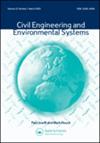水安全的系统思考
IF 1.1
3区 工程技术
Q3 ENGINEERING, CIVIL
引用次数: 1
摘要
水安全涵盖了广泛的问题和风险,涉及人类、自然和建筑环境、经济以及它们之间的相互作用。这种广度创造了一种相互关联的复杂性和潜在的可感知的棘手性。因此,有意义地解决水安全问题需要在平衡水安全的整体性质与对关键过程和要素的简化理解之间作出判断。本文表明,系统思维可以通过适合当地情况的不同水安全系统框架来实现这一目标。通过四个案例研究,我们展示了系统思维如何被适应和应用于多种水安全问题的情境分析和管理。我们展示了这种方法如何消除了学科和部门的藩篱;改变了解决水安全问题的空间尺度;改进数据采集和分析,以更好地理解子系统之间的关系;并将正义和权力的社会生态问题与更传统的水安全生物物理理解结合起来。这是朝着将系统思维转化为系统变革、使水安全概念具有可操作性和可用于政策、规划和实践的方向迈出的重要一步。本文章由计算机程序翻译,如有差异,请以英文原文为准。
Systems thinking for water security
ABSTRACT Water security covers a wide range of issues and risks to people, the natural and built environment, the economy, and interactions between these. This breadth creates an interconnected complexity and the potential for perceived intractability. Tackling water security meaningfully therefore requires a judgement in balancing the holistic nature of water security with reductionist understanding of key processes and elements. This paper demonstrates that systems thinking can be adapted to achieve this through different systems framings of water security, tailored to local context. Through four case studies, we show how systems thinking has been adapted and applied to fit the contextual analysis and management of multiple water security issues. We show how this approach has dissolved disciplinary and sectoral silos; changed the spatial scale at which water security is addressed; improved data acquisition and analysis to better understand relationships between sub-systems; and integrated socio-ecological issues of justice and power with more traditional bio-physical understandings of water security. This is an important step towards turning systems thinking into systems transformation and making the concept of water security actionable and accessible to policy, planning, and practice.
求助全文
通过发布文献求助,成功后即可免费获取论文全文。
去求助
来源期刊

Civil Engineering and Environmental Systems
工程技术-工程:土木
CiteScore
3.30
自引率
16.70%
发文量
10
审稿时长
>12 weeks
期刊介绍:
Civil Engineering and Environmental Systems is devoted to the advancement of systems thinking and systems techniques throughout systems engineering, environmental engineering decision-making, and engineering management. We do this by publishing the practical applications and developments of "hard" and "soft" systems techniques and thinking.
Submissions that allow for better analysis of civil engineering and environmental systems might look at:
-Civil Engineering optimization
-Risk assessment in engineering
-Civil engineering decision analysis
-System identification in engineering
-Civil engineering numerical simulation
-Uncertainty modelling in engineering
-Qualitative modelling of complex engineering systems
 求助内容:
求助内容: 应助结果提醒方式:
应助结果提醒方式:


